Headstick configuration for 2 color mirror image structure arrowhead,

|

|
| Previous | Next |
|
Select the row 1 right side weft strand.
|

|
| Previous | Next |
|
Pass the weft strand through the open shed to the middle of the warp strands that will become the arrowhead design. |

|
| Previous | Next |
|
Form the interlock in the right hand side of row 1 weft strand.
The original weft strand becomes a warp strand and the interlocked warp strand becomes the next segment of the weft strand, |

|
| Previous | Next |
|
|

|
| Previous | Next |
|
Reverse the shed on the right hand side of row 1.
Work from the righ hand edge to the middle of the shed. |

|
| Previous | Next |
|
Secure the row 1 right side weft strand interlock. |
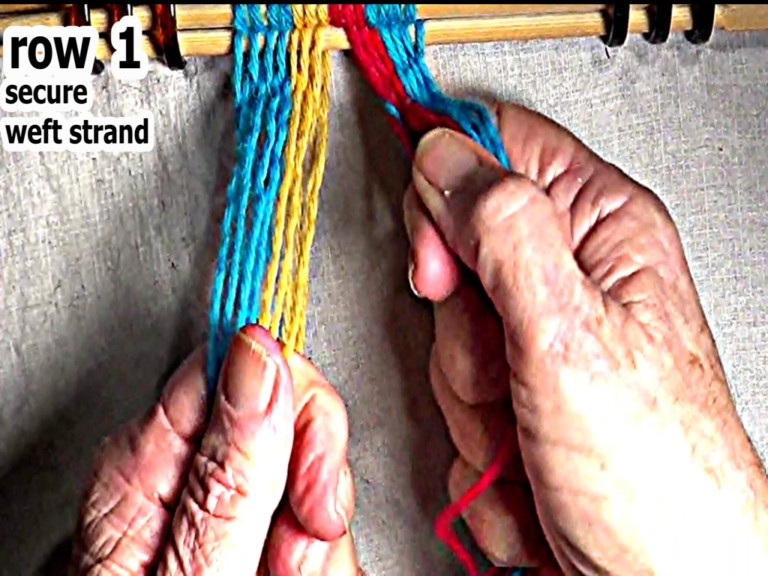
|
| Previous | Next |
|
Select the left side row 1 weft strand.
The first warp strand on the left hand side is selected as the row 1 left side weft strand. |
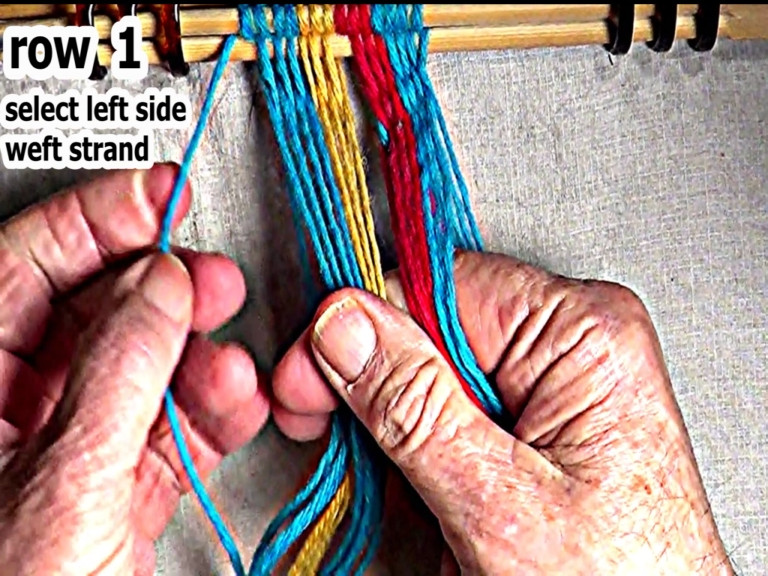
|
| Previous | Next |
|
Pass the left side row 1 weft strand throught the open shed to the middle. |

|
| Previous | Next |
|
Form the interlock in the left hand side of row 1 weft strand.
|
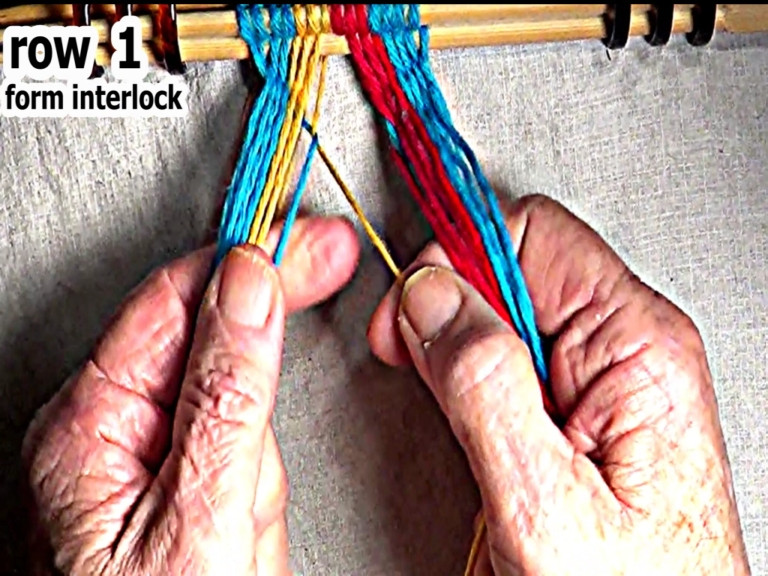
|
| Previous | Next |
|
Place the right side weft strand under the left side weft strand. [OBSERVE]At this point the right side weft strand is under two strands.
|

|
| Previous | Next |
|
Interlock the weft strands by folding the left weft strand down over the right weft strand. [NOTE] When the interlock is formed the weft strands become warp strands. These warp strand are returned to their original sides. |

|
| Previous | Next |
|
Secure the interlocked middle warp strands. |

|
| Previous | Next |
|
Reverse the left hand side of the row 1 the shed.
Work from the left hand edge to the middle of the shed. |

|
| Previous | Next |
|
Set the row 1 weave.
Check individual strands to see that they are snug and even. [TIP] Use index finger as a beater. |
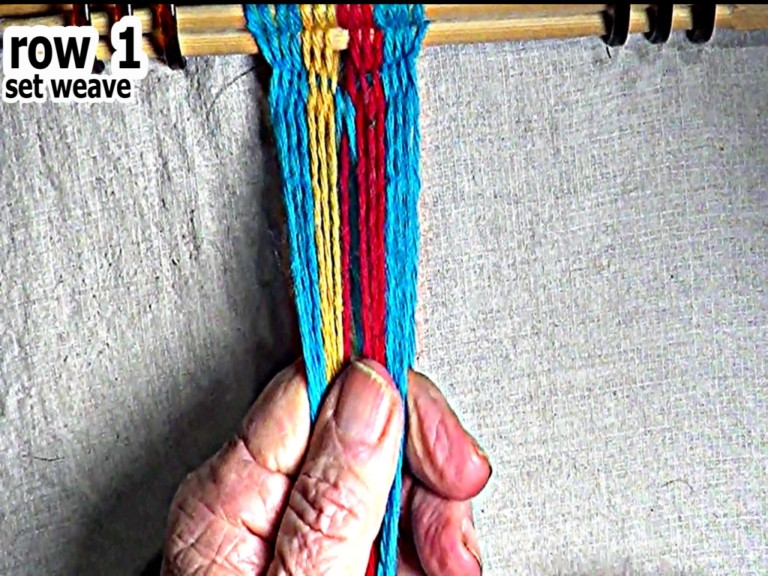
|
| Previous | Next |
|
Select the row 2 right side weft strand.
|

|
| Previous | Next |
|
Pass the row 2 right side weft strand through the open shed to the row 1 right side weft strand interlock. |

|
| Previous | Next |
|
Form row 2 right side weft strand interlock.
When the row 2 right side interlock is formed the row 2 right side weft strand become a top layer warp strand and the warp strand becomes the next part of the row 2 right side weft strand. |

|
| Previous | Next |
|
Pass the row 2 weft strand to the middle. |

|
| Previous | Next |
|
Secure the right side weft strand. |
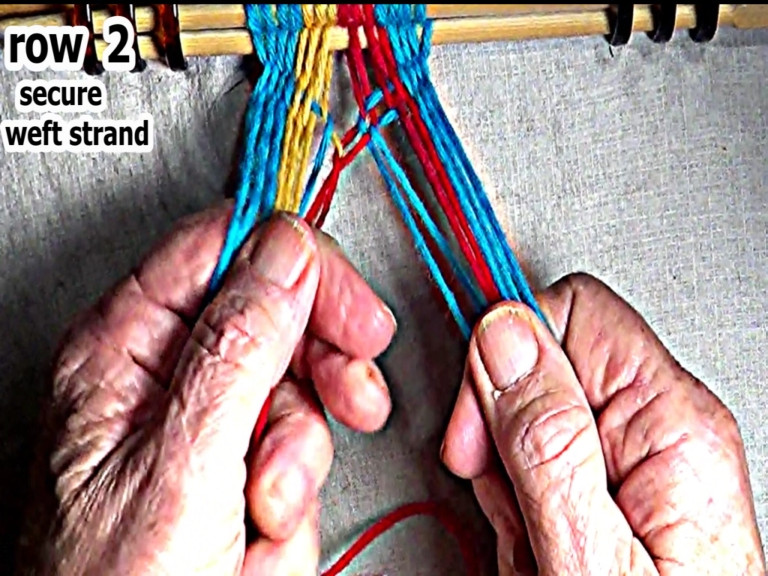
|
| Previous | Next |
|
Reverse the row 2 right hand side of the shed.
Work from the right hand edge to the middle of the shed. |
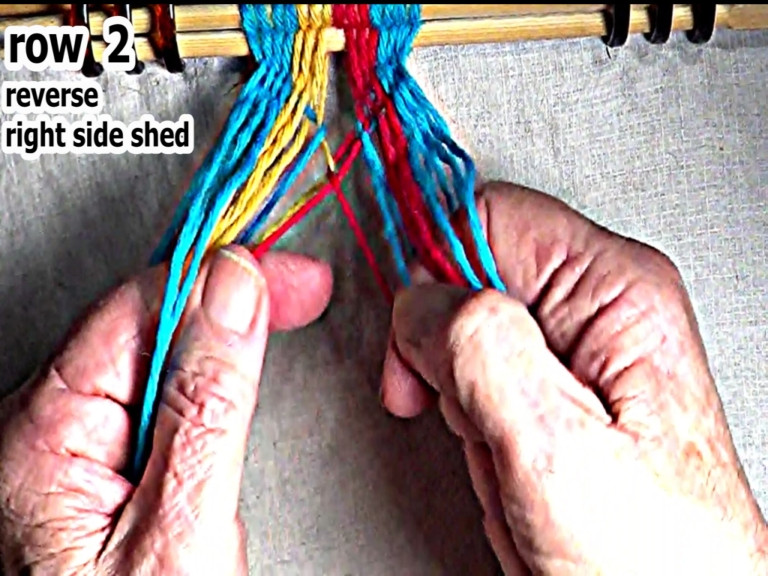
|
| Previous | Next |
|
Secure the weft strand. |

|
| Previous | Next |
|
Select the left side row 2 weft strand.
|

|
| Previous | Next |
|
Pass the row 2 left side weft strand through the open shed to the row 1 left side interlock. |
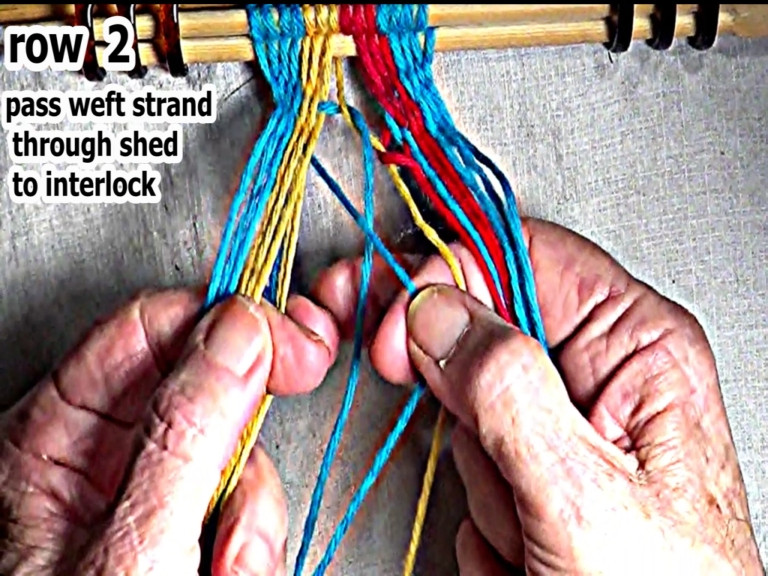
|
| Previous | Next |
|
Form the interlock in the left hand side row 2 weft strand.
When the row 2 left side interlock is formed the weft strand becomes a warp strand. The warp strand that was next to the row 1 interlock becomes the next part of the row 2 left side weft strand. |

|
| Previous | Next |
|
Pass the row 2 left weft strand through the shed to the middle of the work-piece. |

|
| Previous | Next |
|
Place the right side weft strand under the left side weft strand. [OBSERVE]The right side weft strand is under two strands. |

|
| Previous | Next |
|
Interlock the weft strands by folding the left weft strand down over the right weft strand. [NOTE] When the interlock is formed the weft strands become warp strands. These warp strand are returned to their original sides. |
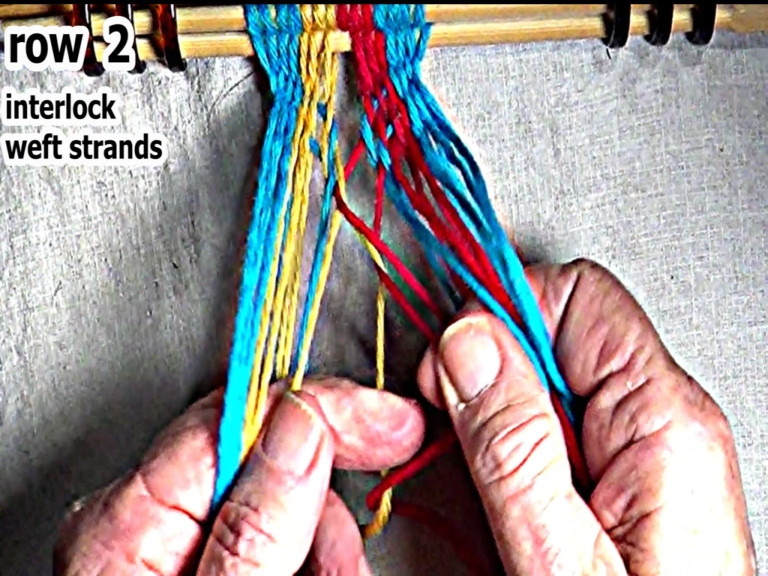
|
| Previous | Next |
|
Secure the interlocked middle warp strands. |

|
| Previous | Next |
|
Reverse the shed on the left hand side of row 2 .
Work from the left hand edge to the middle of the shed |

|
| Previous | Next |
|
Set the row 2 weave.
Check individual strands to see that they are snug and even. [TIP] Use index finger as a beater. |

|
| Previous | Next |
|
Weave the right side of row 3.
|

|
| Previous | Next |
|
Weave the left side of row 3.
|

|
| Previous | Next |
|
Weave row 4. The same sequesence of weaving steps are requires as used for row 3. |

|
| Previous | Next |
|
Weave row 5. The same sequesence of weaving steps are requires as used for row 4. |

|
| Previous | Next |
|
Row 6 requires the same sequesence of weaving steps as row 5. This completes the first segment of the arrowhead pattern. [OBSERVE] Each segment is composed of two parts of the arrowhead.
|

|
| Previous | Top of Page |
|
|